DIY Water Heater Flush
Because a water heater needs to provide plenty of hot water at all times for various purposes throughout your house, it is very common for the holding tanks of water heaters to be large and insulated. Overtime, natural mineral deposits such as sand and grit flushed from municipal water lines, can settle in the bottom of the tank creating a sediment build-up. This sediment build-up in your water heater can reduce the efficiency and capacity of your water heater. It can also plug the drain and interfere with ongoing maintenance, leading to early failure.
Sediment can interfere with burner efficiency in a gas water heater and can cause cracking and popping noises during heating cycles. Depending on your water source and the mineral content, both gas and electric water heaters should be flushed of sediment every 1-2 years to ensure optimal performance. Wyatt Hepworth, plumbing pro with Any Hour Services, suggests, "You may need to drain your water heater more frequently if your water source is a well or if your municipal water has higher than normal sediment content." This is especially true forwater heaters in Utah, where the water is considered to be very "hard".
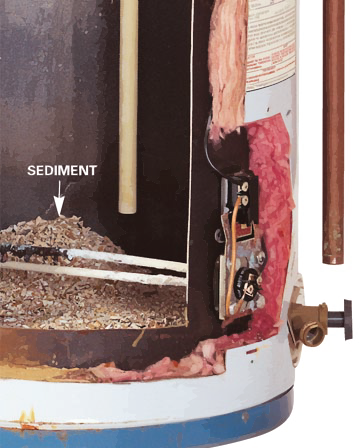
Turn Off Water Supply
Next you will need to find the cold water supply valve and turn it off. It will be located at the top of the water heater.

Turn Off Water Heater
For a gas water heater, turn the thermostat to the "pilot" setting. The next step involves turning off the water heater. For gas, you need to turn the thermostate to the 'pilot' setting. If you have an electric water heater, you will turn off the electricity for the water heater. To do this you will find the breaker box and the switch for the water heater. Please Note: All electric water heaters MUST be fully turned off during any flushing. Electric water heaters must be turned completely off during flushing or the exposed heating element will quickly burn out once the water level drops below the elements.
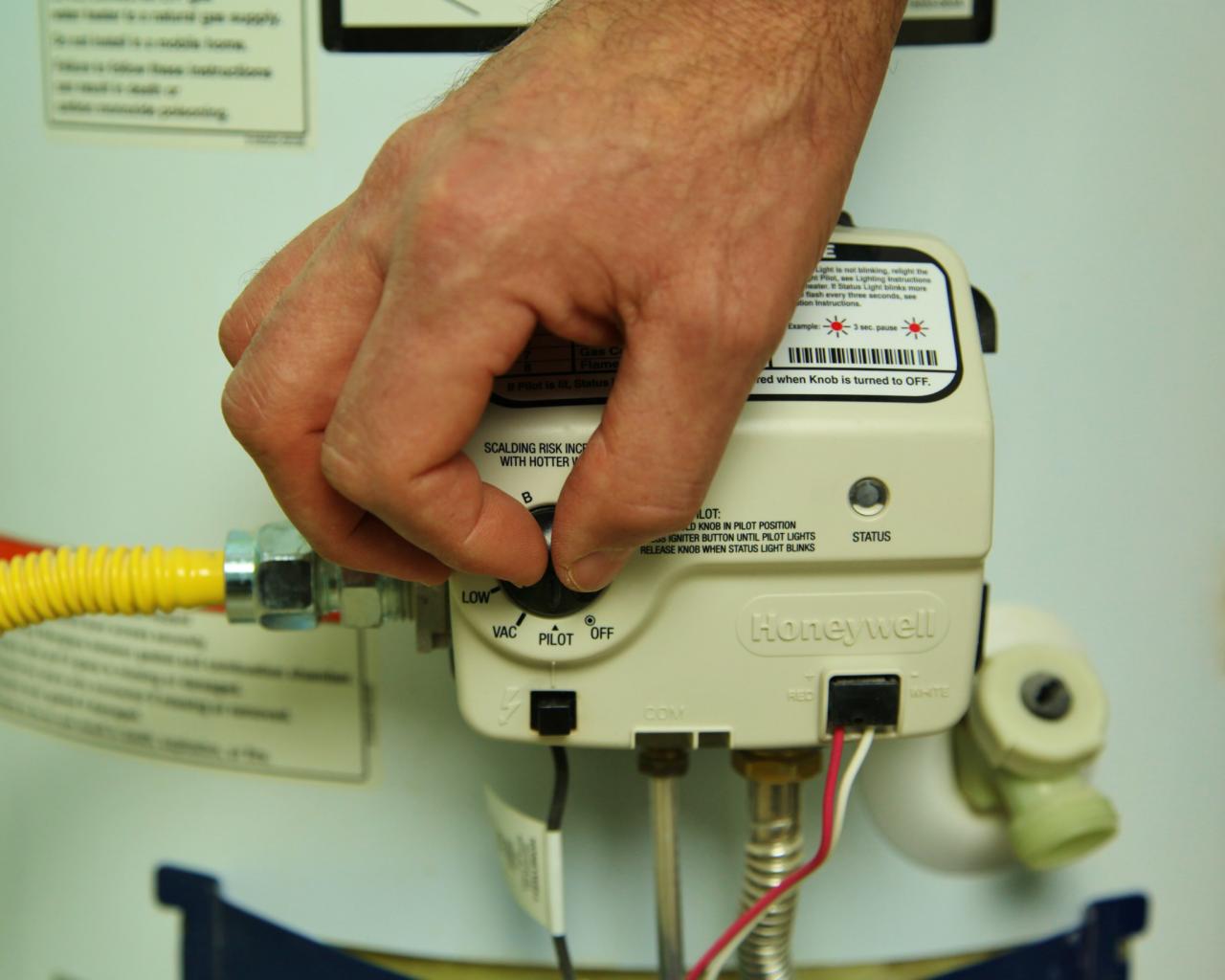
Most circuit breakers have a switch directly dedicated to the water heater so it shouldn't be hard to find. Remember that even though you have turned off the water heater, the water in the tank can stay at scalding temps for hours, so it is best to wait over night for the water to cool down before you proceed with the flush.
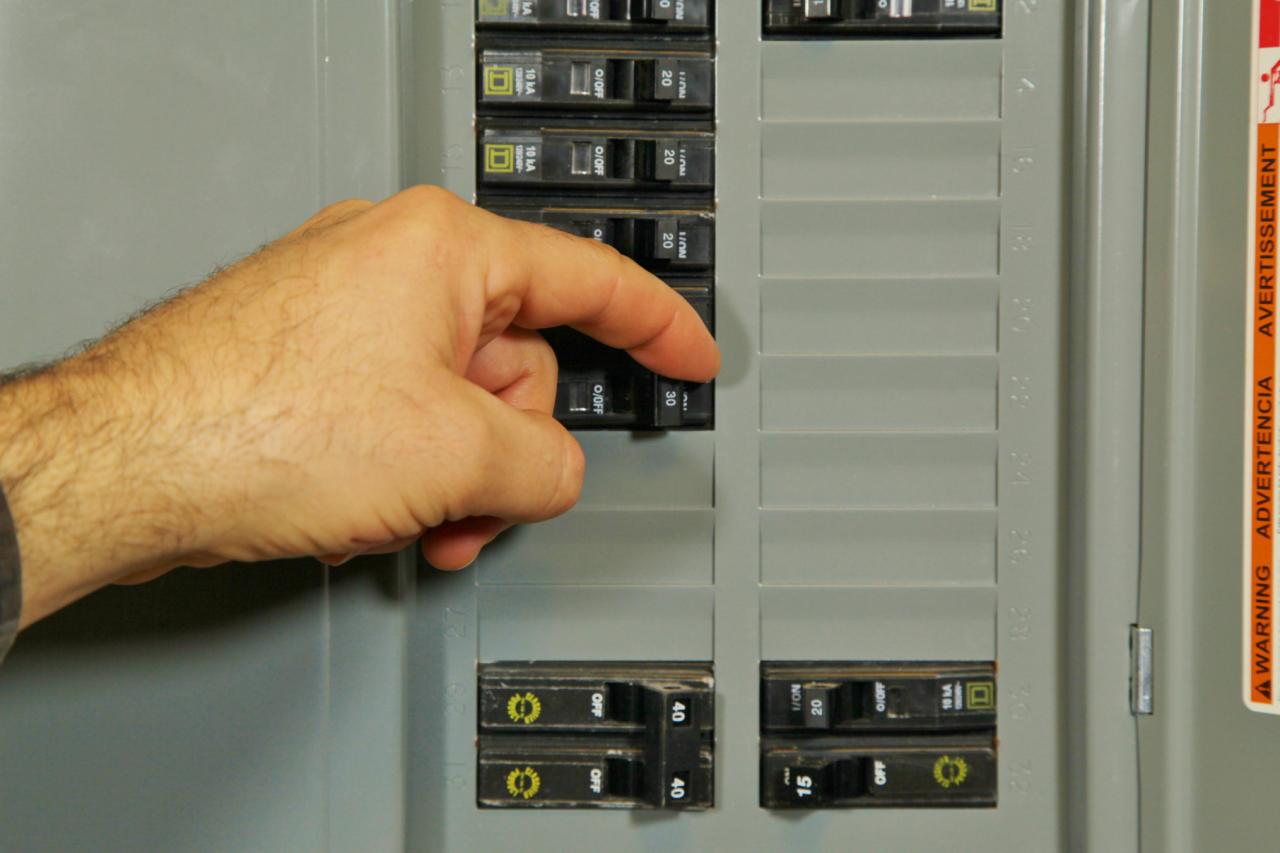
Attach Hose to the Drain Valve
Locate the tank drain valve near the bottom of the water heater tank. Attached a standard garden hose to the valve. Please be aware that some water heater models have a cover over the valve opening. Next you will place the opposite end of the garden hose in a floor drain or in a bucket where the water can drain efficiently.
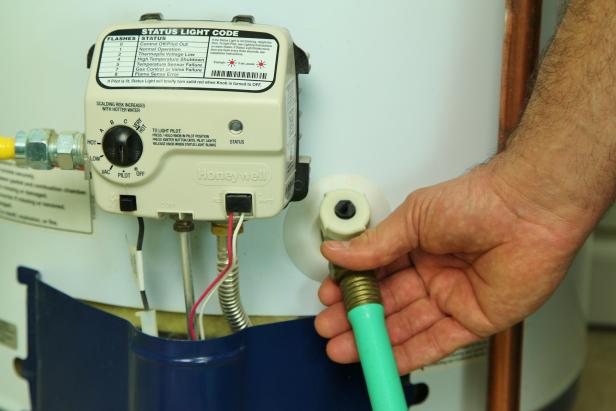
Open Hot Water Tap
For best results, you need to open a hot water tap, preferably a floor above the hot water heater. This provides a way for the pressure to alleviate in the system, and allows the water to drain quickly from the tank.
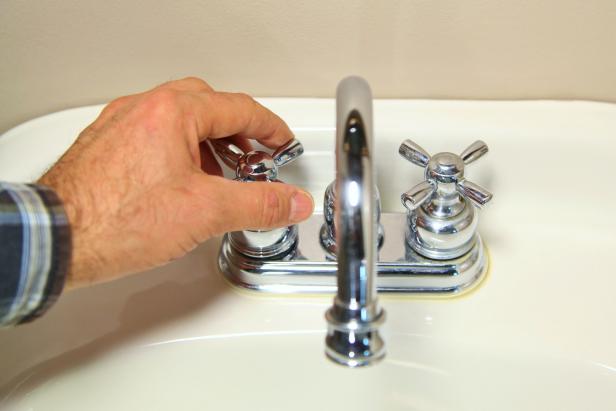
Open Drain Valve
Allow the water to drain from the tank by opening the drain valve. NOTE: Don't forget to use caution in case the water is still too hot. This begins the drain process. Once all water has drained from the tank, turn the cold water supply on to the tank for a brief moment. This will stir up any remaining sediment that needs to be drained. You will want to repeat this step until all your water runs clear. In some cases, sediment may block the opening of the drain valve, limiting the flow of water. If this happens it's best to call in an expert for assistance.

Close Drain Valve, Refill Tank, Turn Water Heater Back On
Once you see clear running water, you can now close the drain valve and remove the garden hose. Turn back on the cold water supply and the tank will begin to fill. You will also need to go back to the hot water tap, opened earlier, and wait for cold water to begin to flow. Once you feel cold water, you can turn that tap off. The final step is to turn the gas valve back on from the pilot position or turn electricity back on to the tank. Be sure to check the valve opening once it's closed to ensure there are no water leaks.
Caution: Some tanks must be completely full to avoid damage to the gas burner or heating elements. Always read and follow all manufacturer's directions and warnings for your particular water heater.

If you do not feel comfortable with this process, you can always call your friendly plumbers at Any Hour Services for your water heater flush. Either way you choose to service it, it is important for you to do it regularly!
Feb 4th 2016

